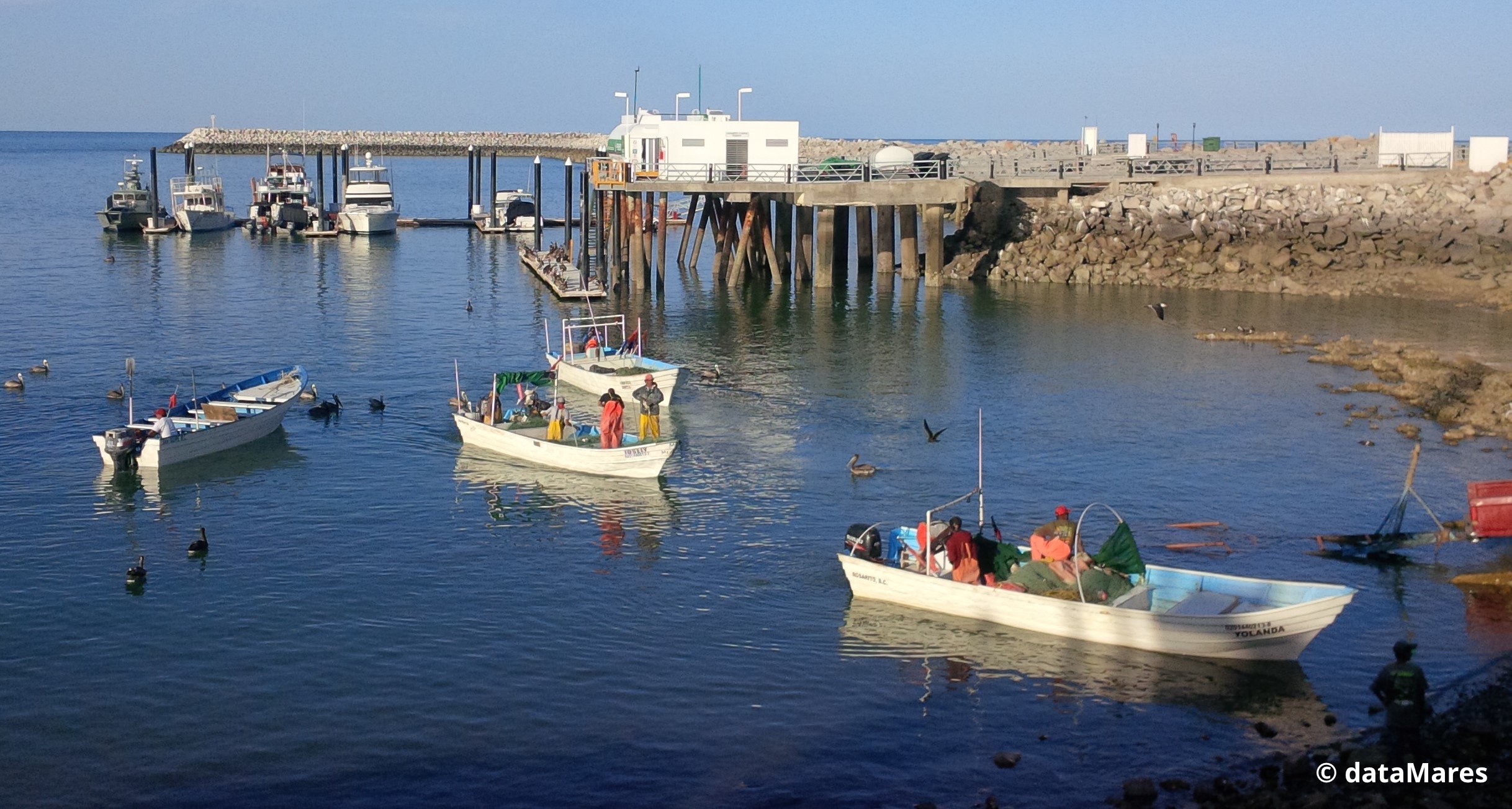Overview of the fishing sector in Mexico: Part I.

All trades carry a story through a worker’s hands. In the same way the hands of a farmer or carpenter have marks from plowing the earth and working wood, a web of scars remains in the fishermen’s skin. Launching nets to the sea and manoeuvring them to extract fish requires a physical effort that surpasses the effort made in many exercise routines. It is not for the weak.
Doroteo Meza, 68 years old, looks at his own scars (1). He is a fisherman trained from a young age on a shrimp boat in the Gulf of Santa Clara, Sonora. Doroteo arrived there when he was a marine and none of the officers wanted to stay in that warm region. There he fell in love and dedicated himself to fishing. He, like thousands of Mexicans, participates in this economic activity that, although has a low contribution to the Gross Domestic Product compared to other sectors, yields benefits for regions of several Mexican states (2). In many ports the main activity is fishing, a trade that allowed Doroteo to buy his house and pay an education for his children.

Sonora is the state with the largest fishing productions. Baja California, Baja California Sur, Campeche, Chiapas, Colima, Guerrero, Jalisco, Michoacan, Nayarit, Oaxaca, Quintana Roo, Sinaloa, Tabasco, Tamaulipas, Veracruz and Yucatan also have fishing fleets and an aquaculture industry, although they do not all make an equal economic and production contribution (3).
To paint a general picture of the fishing sector in Mexico we dove into fisheries production data from the National Commission of Aquaculture and Fisheries (Conapesca) in tons (t) and economic value in millions of pesos (m), for the period 2006-2014. It is worth mentioning that this database includes a large category of fish production (named “Other”) whose species we do not know, since Conapesca did not specify them. However, it has important effects for artisanal fishing and for the effectiveness of fisheries management. This work does not include data on rivers, lakes, and lagoons.
Conclusions
Records for landings and aquaculture in the 17 coastal states reach on average almost 1.5 million tons per year, which is equivalent to an average economic value of 17 billion pesos per year between 2006 and 2014. The highest profit was obtained in 2014 with close to 23 billion pesos, while 2006 marked the lowest with just over 15 billion pesos†.
Fisheries landings at the national level represent 85% of total fish production, with a little more than 1.2 million tons per year and profits of 11 billion pesos. The Northwest region obtains the largest catches, with 78% of the annual average (around one million t). The states that make up this region are: Sonora (498,000 t); Sinaloa (242,000 t); Baja California Sur (144,000 t) and Baja California (97,000 t).
The species with the highest capture volumes for the industrial and artisanal fleets are sardine (533,000 t / 480 m), tuna (113,000 t / 995 m), anchovy (101,000 tons / 93 m), shrimp (52,000 t / 3,000 m) and an “Other” category (more than 78,000 t / 757 m). However, statistics reveal that higher volumes do not always translate into higher profits. This is the case for sardine, a species targeted mostly by the industrial fleet, and shrimp (caught by both fleets). Although the sardine has ten times more catch volume, its added value does not reach even a third of the economic value of shrimp landings.
Octopus, which is caught only by the artisanal fleet, records average landings of 23,500 tons, but its economic value is 690 m, higher than that of sardine. The category “Other” represents important gains for artisanal fishing, up to 16% of the total landings. However, Conapesca does not disaggregate the corresponding data of the species under this category in the period studied, a case that will be analyzed in later works.
Finally, aquaculture in the 17 coastal states produces 15% of fish and shellfish nationwide with almost 222,000 tons on average annually and value above 6 billion pesos. The entities with the highest volume are Sonora (54,000 t), Sinaloa (almost 45,000 t), Veracruz (30,000 t), and Tabasco (19,000 t). Sonora is the entity that has the most productions in both landings and aquaculture, nationally.
Read part two of this series here.
† All the values of capture are in tons (t) and those of economic value in millions of pesos (m); all figures are annual averages for the period 2006-2014.
This work is part of a scientific journalism project launched by dataMares, which aims to achieve greater transparency, dissemination, and understanding of key information for decision-making regarding the sustainable use and conservation of natural capital. The close collaboration between journalists and scientists from different groups, especially the Gulf of California Marine Program (GCMP), is a central element of this project, the first with of its kind in the country.
Authors:
Alejandro Melgoza-Rocha*, Santiago Domínguez**, Catalina López-Sagástegui***
Contact Information:
DOI:
10.13022/M3KP8K
Affiliations:
*Independent journalists, Mexico; ** dataMares; *** University of California Riverside, Riverside, CA., U.S.A.
Acknowledgements:
How to cite this story:
Alejandro Melgoza-Rocha, Santiago Domínguez, Catalina López-Sagástegui (2018): Overview of the fishing sector in Mexico: Part I. dataMares. InteractiveResource. https://doi.org/10.13022/M3KP8K
References
- Enrique Alvarado, Andrés M. Estrada, Alejandro Melgoza
- Instituto Nacional de Estadística y Geografía (Inegi). Share Producto Interno bruto aprecios corrientes. http://www.inegi.org.mx/inegi/contenidos/notasinformativas/pib_precr/ni-pibcr.pdf
- Secretaría de Agricultura, Ganadería y Pesca (Sagarpa). Share Informe de labores 2015-2016 http://www.sagarpa.gob.mx/Transparencia/POT_2016/Informe/CuartoInformeDeLabores_SAGARPA.pdf

